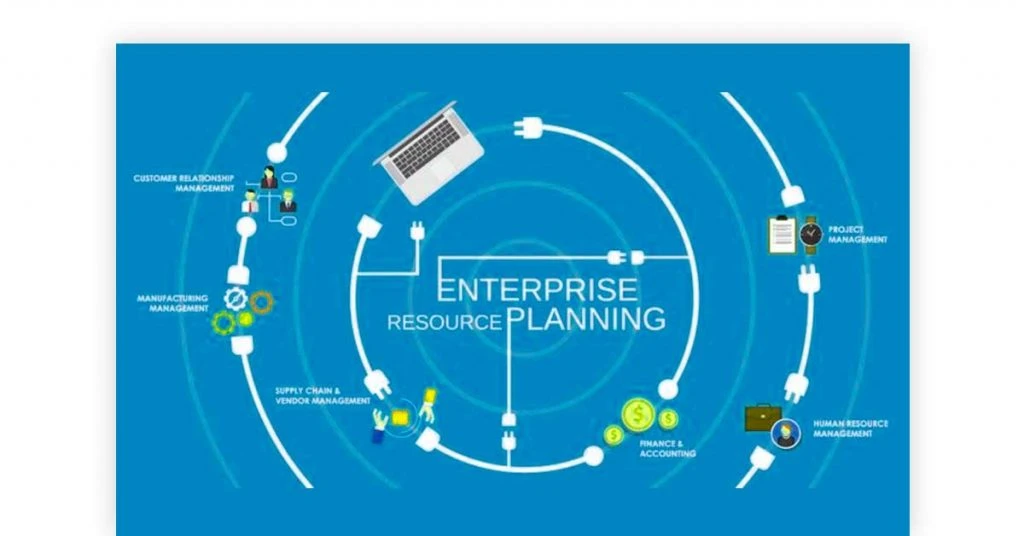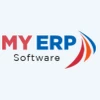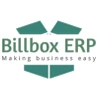Checklist for Successful & Secure ERP Implementation: Challenges & Best Practices

An ERP implementation will rarely be perfect, but with careful planning and understanding, you can make sure it fits your timeline and budget. This may seem intimidating, but using the checklist below will make the process go smoothly.
Top ERP Expectations of Any Business
Today, ERP software solution is available for nearly every type of business. In general, each company has its own particular expectations from ERP software.
Streamlined business processes: By automating and integrating your business processes, the ERP system increases productivity and reduces labor costs and time. As the business grows, it becomes necessary to upgrade the company’s system so that it will require less manual labor. It will give team members more time to handle complex complaints rather than responding to simple queries one by one.
Better data analysis: ERP is expected to transform the way a business gathers and analyzes its data. This would help the management and leaders to accurately identify the insights of their entire business operation quickly.
More effective business operations: The modern ERP system promotes business efficiency by making collaboration faster and easier. You can meet the needs of your partners and stakeholders with an ERP system, and it can improve employee productivity and morale by automating repetitive tasks.
Major ERP Implementation Challenges Faced by Management
ERP implementation challenges that can give tough time to the management and the end users, if left unattended.
- Approval from top management
ERP implementation often takes longer than expected because of a slow response from higher authorities. The top management must be completely involved in the secure ERP implementation process.
- Integration process
When implementing ERP applications, one of the key challenges is determining which processes to integrate. It is common for companies with multiple divisions to face this type of challenge.
- Proper training
Educating the staff about the new ERP system is essential before and after it is implemented. In the beginning, employees might be resentful about adopting the new ERP software. However, adequate training and motivation can resolve the problem.
- Challenges with data migration
Since ERP system is replacing legacy systems, it causes data migration challenges. There might be incompatibilities between the data of the legacy systems and ERP systems.
A proper implementation plan can overcome this issue. By doing so, you can get a better understanding of the various modifications that might be required for a new system.
- Flexibility Issue
ERP systems are sometimes not flexible enough. It means that it cannot be set up according to the current business process. A company at this time needs to step backward and adjust to the requirements of the ERP system. You can eliminate such issues by selecting the appropriate ERP software for your business.
- Costs of ERP implementation & upgrades
ERP system upgrades are frequently required to keep up with changing business requirements. This is where vendors play an important role. Look for a vendor who offers free updates without involving any hidden costs at the time of purchase.
- Delayed user acceptance
Despite having the appropriate training, some employees may still find it difficult to adjust with the new ERP software. Therefore, the implementation process could be planned in a customized manner.
- Hardware requirements
In order to run efficiently, ERP systems might need advanced hardware. Therefore, it is recommended to invest in appropriate hardware for the ERP system that a user intends to implement.
Suggested Read: List of Best Free & Open Source ERP Software India
Purchasing Considerations for ERP Software

Are you ready to invest in a good ERP software? Wait, make sure you consider these factors for smooth implementation.
Time Frame
- What is the expected timeline for successful and secure ERP implementation?
- How would a detailed schedule look?
- What resources are to be provided and when?
- Where might operational disruptions occur, and when?
Customization
- How much customization can be expected from the system?
- Does the provider truly understand your unique business needs and processes?
Project Management
- How your project will be managed by the provider?
- Will you get an experienced and responsive single point of contact?
- Which members of your team will have to be involved in the implementation process?
Usability
- A successful and secure ERP implementation relies heavily on user adoption.
- Evaluate the application’s intuitiveness and ease of use across various roles.
Subscription Costs
- What is the cost structure of a subscription arrangement?
- How much of the costs are upfront
- What are the monthly costs, and are those flexible?
Project Costs
- Are there any additional costs involved?
- Is there anything you should be particularly careful to understand your ERP scope?
Data Migration
- What are the things you should know about the migration of your existing data?
- Are you aligned with your ERP provider to assess the challenges involved in migrating from legacy systems, removing obsolete or redundant data, cleaning data, and so on?
Maintenance and Updates
- How you can make modifications to the ERP system once it has been implemented?
- What activities will require assistance from the service provider or programmer or a specialist consultant?
Training
- Is there any demo or training resources offered?
- Does it cost anything, or are they offered free?
ERP Implementation Lifecycle or Phases

A fair understanding of these ERP implementation phases will help with better planning and execution.
- Step 1: Package selection
First and foremost, you have to choose an ERP software that is right for your business with all essential modules. There is a large variety of options available on the market, and choosing the right one for your business can be a challenge. This step eliminates any ERP modules that have no relevance to your business.
- Step 2: Project planning
A project should be planned out properly before it is launched to avoid any surprises in the implementation process. From selecting the right resources to assigning tasks, planning is vital for successful ERP implementation.
- Step 3: GAP Analysis
Another important phase in the ERP implementation life cycle, GAP analysis is conducted to analyze an organization’s current system. By doing so, you can easily pinpoint which processes in your enterprise resource planning require the most attention.
- Step 4: Re-engineering
To improve the efficiency and effectiveness of a process, re-engineering is used. It involves various alternations and changes based on project planning and gap analysis.
- Step 5: Training
Due to the implementation of a new system, employees will have to undergo appropriate training before they can start using it seamlessly.
- Step 6: Testing
This is another essential step in the lifecycle of ERP implementation. Basically, testing is carried out to determine the errors so that they can be resolved before implementing the actual application process.
- Step 7: Application
It is during this phase that the ERP system is actually implemented. After collecting, analyzing, and converting all the data for being fed into the new system, the old system is discarded and replaced by the new one.
- Step 8: Maintenance
As part of the ERP life cycle, maintenance is the last step. After the new system has been implemented, employees who are working on it should stay abreast of the latest technological advances. Additionally, employees should become familiar with the necessary steps to upgrade the system and keep it operating.
Suggested Read: List of Best ERP Software for Real Estate in India
Checklist of Successful & Secure ERP Implementation
Abide by these ERP implementation checklists to ensure that nothing goes wrong at every step.
Plan
- Post the purchase, develop a project team for ERP implementation.
- Identify common problems and unneeded steps in business processes by documenting and evaluating their current state.
- Organize recurring meetings and kickoff calls.
- Identify the scope and objectives of your secure ERP implementation project before you begin developing your project plan.
Prepare
- The ERP project team should finalize the project plan.
- Verify the project plan’s readiness for implementation by obtaining approval from the steering committee and project team.
- Make sure the data is clean and compatible with the new ERP system by developing a data migration strategy.
- Prepare a backup strategy and business continuity plan for data.
- Establish user enablement strategies to train all users and user groups.
Train
- Conduct training for end users according to the training plans as specified under the change management plan.
- A customer transition meeting should be conducted with the vendor following the training to assist the customer in adopting and owning the new system.
Install
- Install ERP software relevant to the new business processes developed as a result of the planning process.
- Start migration of initial static data.
- If required, prepare hosting and hardware infrastructure and create plans for sharing data between departments.
- Finish installing software and customizing the system.
Ensure Data Flow
- Validate the accuracy of the migrated data, and make sure it is clean and accurate, without duplicate or incorrect data.
- Establish a data mapping process to ensure smooth data flow between business areas and departments as part of the testing and go-live process.
Evaluate
- Test all inputs and outputs relating to user data so that processes can be clearly understood.
- Ensure that all user groups and functions are operating according to plan by confirming the validity of business processes.
- Identify and troubleshoot any unknown errors that may occur during the test of your infrastructure or solution.
Get Support
- Closing out the project with support teams and transitioning to post-implementation support.
- Continue to maintain and support the software through training of users.
Suggested Read: Latest Best ERP Software For Schools in India
How Is DataNote Software Ensuring ERP Security?
DataNote enterprise software solution is a cloud-based ERP system that allows businesses to manage their data without compromising data security. Its proprietary OpenLogic framework is what distinguishes it from traditional ERP implementation. Its users don’t have to share any business data, trade secrets or business logic while streamlining different processes.
DataNote ERP streamlines processes across departments and centralizes the information for security. It maintains standard security requirements and provides restricted access to manage, edit, and co-author.
Conclusion
ERP systems have gained global recognition for their ability to provide competitive advantages with an unprecedented rise in mergers as well as a stronghold over competitors. An ERP system that is successfully planned and managed can improve employee productivity and customer satisfaction. Thus, it can effectively increase profits while using low resources.
A digital marketer by profession and a writer by passion, Vineet takes great interest in staying on top of business technologies. You ask him, and he knows it! Not a single news in the SaaS world has ever skipped his attention. He believes in SaaSifying his readers with... Read more




























